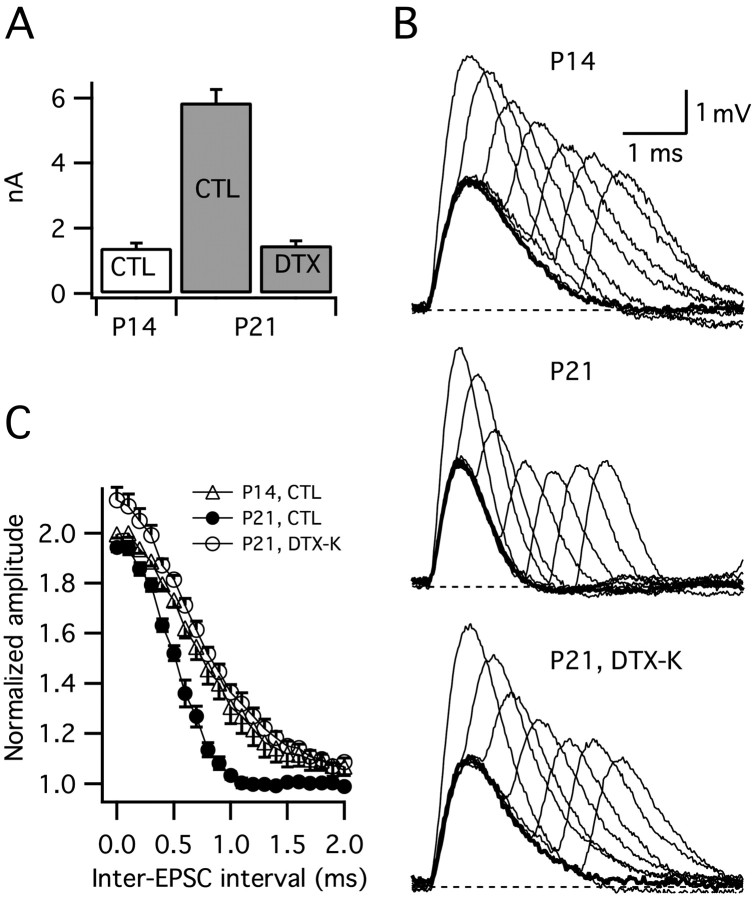Figure 7.
The developmental increase in IK(LVA) narrows the window for temporal summation. A, IK(LVA) measured in whole-cell voltage-clamp recordings increases approximately four-fold between P14 and P21 (amplitude shown for steps to –45 mV from a –80 mV prepulse). Bath application of 31 nm DTX-K partially blocked IK(LVA) by 73.5 ± 1.8% rendering the amplitude of IK(LVA) at P21 similar to the amplitude at P14. B, Current-clamp responses to single (thick lines) and paired simulated EPSC injections (pairs separated by 0–2 ms, 0.4 ms steps, thin lines) at P14 and P21. Partial block of DTX-K-sensitive current (31 nm DTX-K) widened responses at P21 such that they were similar to those at P14. Single EPSPs were adjusted to ∼3 mV. C, Peak voltage responses to paired EPSCs. Summed responses were normalized to the peak amplitudes of single EPSPs. The window for temporal summation was larger at P14 than at P21 (p < 0.01). The reduction of DTX-K sensitive current with 31 nm DTX-K broadened the window for temporal integration at P21 (p < 0.001). The window of temporal integration was defined as the time taken for averaged EPSP amplitudes to fall within 10% of baseline. CTL, Control.

